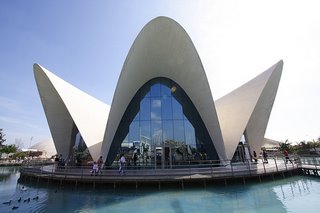Like the tilting mast tower, this is from the Dutch JOTA-JOTI handbook CD, originally in Dutch and published in English here for the first time. Here's a render from my SketchUp model, followed by a translation of the original Dutch article including drawings.
The Brownsea 66 Tower
This tower was designed by the "Brownsea 66" group in Rotterdam and used during the JOTA in 1977. It is a pioneer piece with a modern design and, in addition to its task as an antenna carrier, also works excellently as an "Eye-catcher".
The construction consists of two tripods that are attached to each other at the open sides with round lashings. Six crossbars keep the three-posts apart and the tower is braced with three guy posts.The procedure is as follows:
1.Check the six posts that will form the three uprights for cracks and tears. Pay particular attention to damage that is transverse to the grain of the wood, because there will soon be tension on the posts. This increases the chance that new longitudinal cracks will develop. In short, use very good lashing posts for this construction.
2. Then attach two piles in line with each other using two scaffolding lashings per pile couple and reinforce the connections with wedges. Make sure that the total length of each upright is the same.
3. The top and the base of the tower are tied with figure of eight lashings. Always work towards the end of the posts. This prevents unnecessary pulling through of the ropes.
4. The cross bars are then pioneered between the uprights with square lashings. The posts will be placed on the outside of the uprights. The starting clove hitch comes on the crossbar because the pressure on the lashing runs in the direction of the crossbar. Make sure that the distance between the uprights is kept the same.
5. The tower can be guyed with guy lines that are attached to the bottom with pickets or with three-to-one handholds. In the design use was made of guy-posts, which were attached to the inside of the uprights with cross lashings just above the first group of sleepers. Optionally, the diagonal lashing can also be used for the top attachment of each guy-post, because this must after all prevent the tower from giving way.
6. The tower can be raised with a giraffe (a vertical pole or pair of shear legs which are tied to the tower, and then to a block and tackle to allow the tower to be lifted off the ground). The vertical adjustment can be carried out using the strut posts. It is recommended to bury the foot of the tower.
 |
| diagram of a giraffe in use on a simple mast |
7. This tower is very suitable as a carrier for heavier antenna types that can be placed even higher with the help of an extension pole at the top.
















































